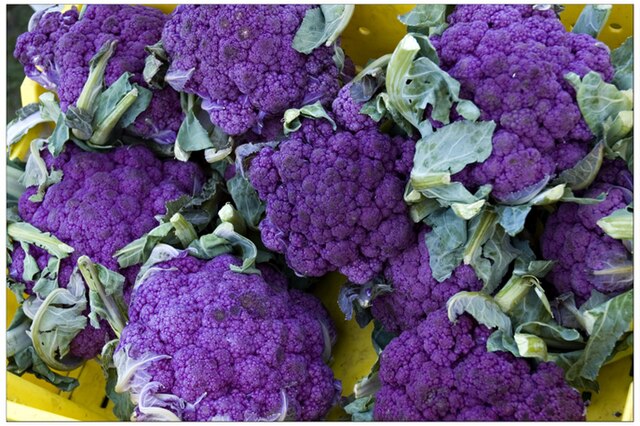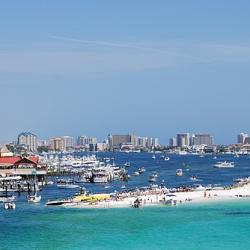
God’s Color Purple
While loving someone may color your world like Chicago’s 1970 hit single, “Colour My World” describes, God colored the whole world. The Master Artist utilized a palette of hues, to produce vivid sights in His creation. But the one which may be the most brilliant in nature and which signifies His majesty is God’s color purple.
A Primer On Purple
A secondary color, purple results from mixing the primary colors of red and blue. Because of its fairly even mix of components, purple exhibits both a red and a bluish tint. Psychologically, the hue energizes imagination and productivity. It also stimulates creative problem-solving, ambition, and extravagance.
The modern word purple ultimately derives from the Greek porphura. That term was the name of the Tyrian purple dye produced in the ancient world from mucus the spiny dye-murex snail secreted.
Producing Purple In The Past
Throughout history, people have commonly associated purple with royalty, nobility, luxury, and power. The reason for that association becomes clear with knowledge about the purple dye used to color fancy garments. Tyrian purple, the most coveted dye color, was an extremely expensive commodity. Ancient Phoenicians in the cities of Tyre and Sidon began making the rich, deep-purple dye as early as the 15th century BC. The dye’s high cost reflected the difficult and time-consuming process involved in its production.
The secretion of a mollusk, the murex sea snail found in the Mediterranean Sea, served as the basis for Tyrian purple. To make the dye required removal of the snail from its shell and then the removal of pus-like matter from a cyst near the creature’s head. Discarded shells from this process were found next to ancient dyeworks in Athens and Pompeii as well as mountains of them at sites in Tyre and Sidon. One murex produced only two drops of dye, with 10,000 to 20,20o mollusks needed to produce one gram of dye. Understandably then, only the rich, famous, and powerful could afford garments colored by this dye which turned fabrics it covered purple upon sunlight’s contact with it.

Past People Wearing Purple
Tyrian purple was the go to color for anyone who was anyone in ancient times. It served as the color for kings, nobility, priests, and magistrates all around the Mediterranean. Both Homer’s Iliad and Virgil’s Aeneid mention such colored clothing. Roman magistrates wore purple as did the imperial rules of the Byzantine Empire and the Roman Empire. Later, bishops of the Roman Catholic church donned apparel in that shade. Even today high-ranking Roman Catholic clergy appear in purple vestments such as mantelletas, sleeveless, knee-length vests.
The wearing of purple also extended to Eastern civilizations to signify rank and power. In Japan, the color is called Murasaki, and the Japanese traditionally associate it with the emperor and aristocracy.

God’s Color Purple In Nature
The color purple is extraordinarily rare as a hue in nature. Despite its general rarity, purple does appear quite commonly in flowers, fruit, and berries. Examples include purple passionfruit, purple cauliflower, and purple irises.
A breathtaking sight of purple may occur thanks to the so-called purple mountains phenomenon. According to this concept, the greater the distance between the viewer and the mountains, the more purple the geographic features will appear. The lyrics of the well-loved song “America The Beautiful” reference this phenomenon with the words “purple mountains’ majesty.”

Biblical References To The Color Purple
A word search for “purple” in the NIV came up with 51 references. These references include the garments worn by the kings of Midian as noted in Judges 8:26, the cloth the early Christian Lydia sold per Acts 16:14, and the colored fabric peddled by the merchants of the earth in Revelation 18:11-12. Purple also figured in the precise instructions God gave Moses for the building of His Tabernacle. It was incorporated into the curtains, veils, and priestly garments. In particular, the thick curtain separating the Holy of Holies from the Holy Place included purple yarn as a component.
The color purple even plays a significant and symbolic part in the account of Jesus’ crucifixion. In addition to placing a twisted crown of thorns on Jesus’ head, the Roman soldiers also clothed Him in a purple robe. They then mocked Jesus calling Him “King of the Jews.”

Appreciating God’s Color Purple
God’s color purple is sprinkled everywhere. It can be found in nature as with irises and mountains. References to Tyrian purple garments, colored by dye made with secretions from the sea snails God created, appear in historical records. And numerous passages in the Bible speak of purple garments and cloths. Although used by Roman soldiers to mock Jesus, His position as King of Kings makes Him the the only one truly entitled to wear royal purple robes. God’s color purple is truly the color of His majesty.













